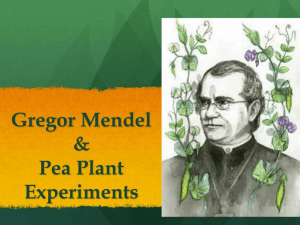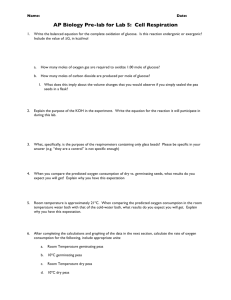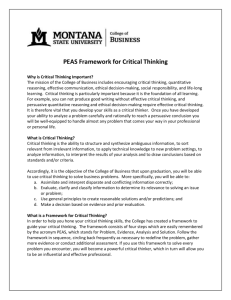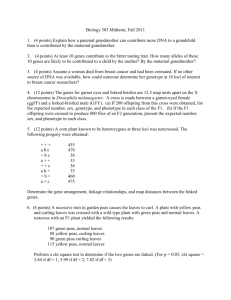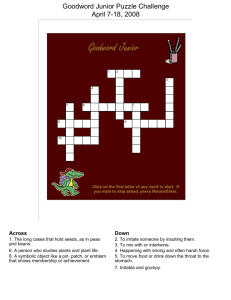Southern Pea
advertisement
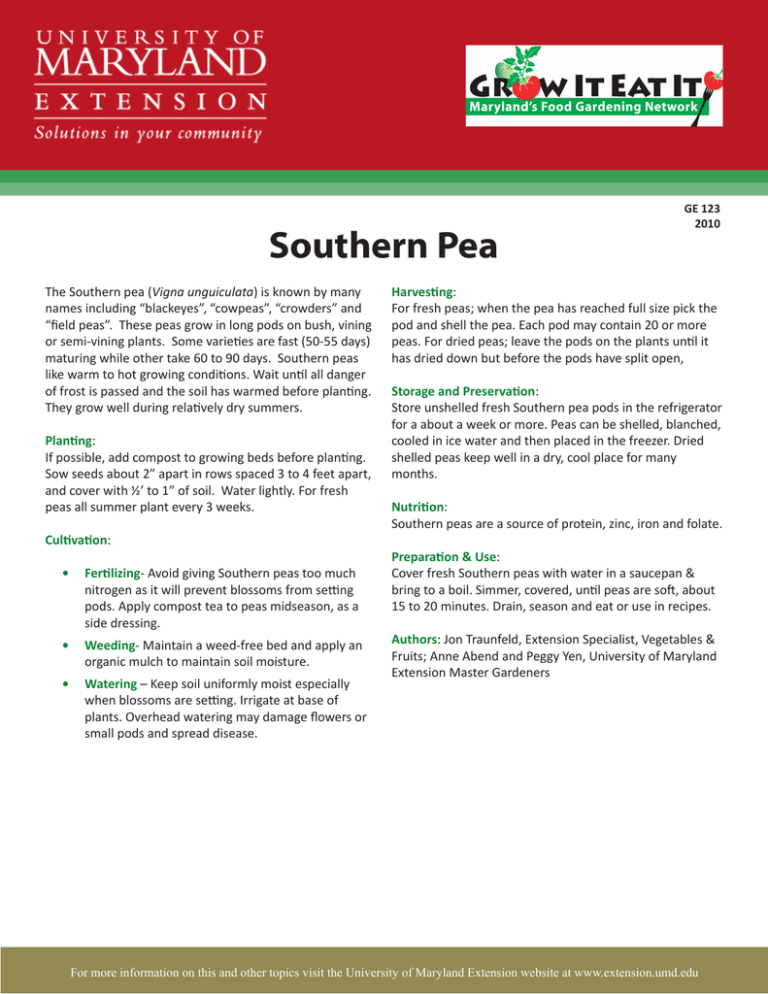
Southern Pea The Southern pea (Vigna unguiculata) is known by many names including “blackeyes”, “cowpeas”, “crowders” and “field peas”. These peas grow in long pods on bush, vining or semi-vining plants. Some varieties are fast (50-55 days) maturing while other take 60 to 90 days. Southern peas like warm to hot growing conditions. Wait until all danger of frost is passed and the soil has warmed before planting. They grow well during relatively dry summers. Planting: If possible, add compost to growing beds before planting. Sow seeds about 2” apart in rows spaced 3 to 4 feet apart, and cover with ½’ to 1” of soil. Water lightly. For fresh peas all summer plant every 3 weeks. Cultivation: • Fertilizing- Avoid giving Southern peas too much nitrogen as it will prevent blossoms from setting pods. Apply compost tea to peas midseason, as a side dressing. • Weeding- Maintain a weed-free bed and apply an organic mulch to maintain soil moisture. • Watering – Keep soil uniformly moist especially when blossoms are setting. Irrigate at base of plants. Overhead watering may damage flowers or small pods and spread disease. GE 123 2010 Harvesting: For fresh peas; when the pea has reached full size pick the pod and shell the pea. Each pod may contain 20 or more peas. For dried peas; leave the pods on the plants until it has dried down but before the pods have split open, Storage and Preservation: Store unshelled fresh Southern pea pods in the refrigerator for a about a week or more. Peas can be shelled, blanched, cooled in ice water and then placed in the freezer. Dried shelled peas keep well in a dry, cool place for many months. Nutrition: Southern peas are a source of protein, zinc, iron and folate. Preparation & Use: Cover fresh Southern peas with water in a saucepan & bring to a boil. Simmer, covered, until peas are soft, about 15 to 20 minutes. Drain, season and eat or use in recipes. Authors: Jon Traunfeld, Extension Specialist, Vegetables & Fruits; Anne Abend and Peggy Yen, University of Maryland Extension Master Gardeners For more information on this and other topics visit the University of Maryland Extension website at www.extension.umd.edu Do you have a plant or insect pest question? Visit us at extension.umd.edu/hgic and click Ask Maryland’s Garden Experts Author: Jon Traunfeld, University of Maryland Extension Specialist, Home and Garden Information Center, Vegetables & Fruits; Anne Abend and Peggy Yen, University of Maryland Extension Master Gardeners This publication, GE123, is a series of publications of the University of Maryland Extension and The Home and Garden Information Center. For more information on related publications and programs, http://extension.umd.edu/hgic. Please visit http://extension.umd.edu/ to find out more about Extension programs in Maryland. The University of Maryland, College of Agriculture and Natural Resources programs are open to all and will not discriminate against anyone because of race, age, sex, color, sexual orientation, physical or mental disability, religion, ancestry, or national origin, marital status, genetic information, or political affiliation, or gender identity and expression. 2 For more information on this and other topics visit the University of Maryland Extension website at www.extension.umd.edu
